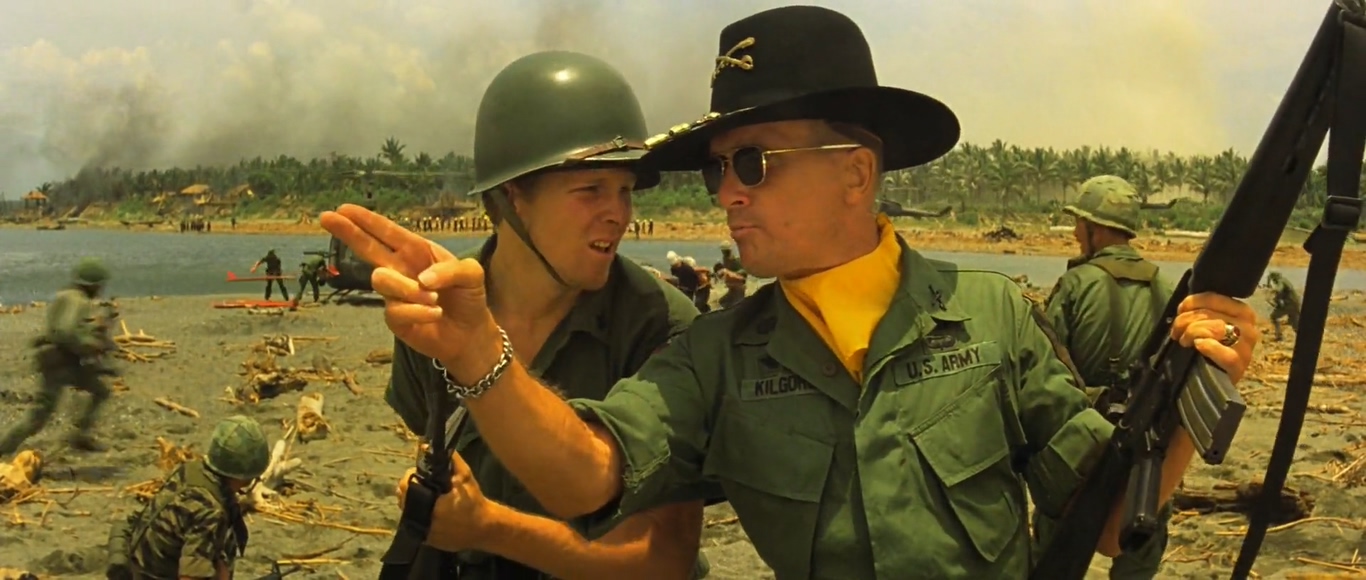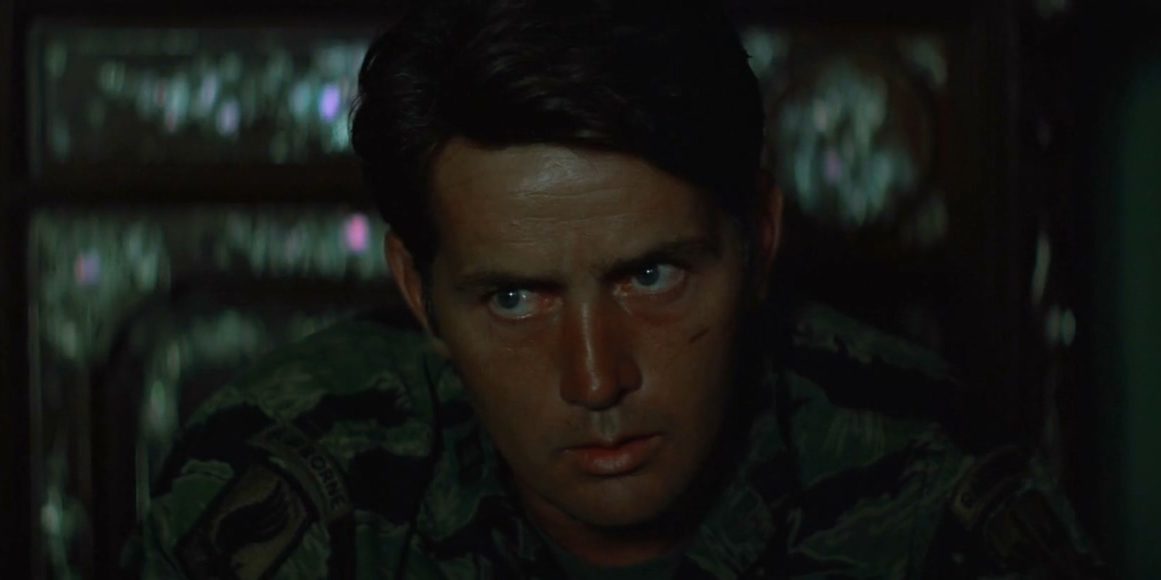Auteur director Francis Ford Coppola’s 1979 psychological war movie ‘Apocalypse Now’ needs no introduction to cinema lovers. A satire at its finest, the classic film is also a retrospective of the dark history of the Vietnam War, the discontents of which defined a rebellious generation. The largely episodic story follows nonchalant Captain Benjamin Willard. He joins a U.S. Navy River Patrol boat to penetrate the foggy and dystopian jungles of Vietnam and reach the other side of civilization, to locate a sort of charismatic demigod. The journey is fraught with unending perils, brooding fear, and some surreal shenanigans.
The star-studded cast ensemble includes Marlon Brando, Robert Duvall, and Martin Sheen. The movie’s scenes and dialogues have become ingrained in the popular culture, from the first flashback bombing sequence with The Doors playing in the background to the deadpan “Charlie don’t surf!” scene. However, you may wonder how the epic story came to be conceived and whether there is a grain of truth in it. Well, in that case, let us probe deeper.
Is Apocalypse Now Based on A True Story?
No, ‘Apocalypse Now’ is not based on a true story. The Vietnam War backdrop of the movie may have roots in reality. Still, the core story of an onlooker protagonist penetrating through the rives searching for a rogue captain is entirely fictional. U.S. Special Forces Colonel Walter E. Kurtz may have more to do with Joseph Conrad than the actual Vietnam War. John Milius of ‘Dirty Harry’ fame penned the screenplay along with Coppola, and the narrations were written by the war correspondent and author Michael Herr.

It was the year 1967. The Vietnam War was raging on far-flung frontiers, and bottled-up emotions of an emerging youth subculture defined an era. Filmmaker-screenwriter John Milius landed a gig as an assistant director for Coppola on the set of ‘The Rain People.’ Milius himself wanted to volunteer for the war, but they would not let him since he had asthma. Following the setback, friends Steven Spielberg and George Lucas encouraged Milius to write a film script around Vietnam War.
During Milius’ college days, his English professor Irwin Blacker challenged the class by stating that no film adaptation had ever fully captured the brilliance of Joseph Conrad’s epic novella ‘Heart of Darkness.’ Milius had read the story in his teens, and he took Blacker’s challenge as creative input.
However, blindly following the whole book would have been too easy, and thus, Milius thought of changing the Congo backdrop to a more politically relevant Vietnam. He sought to use the story as an allegory, and in the finality, the film deviates quite a lot from the book while keeping the enigma of Mistah Kurtz as the kernel. Milius found the name from a hippie button badge from the 60s that said: Nirvana Now; he tweaked the slogan to ‘Apocalypse Now.’
Some real anecdotes were incorporated to make the story seem plausible. The Playboy Playmates scene was based on an actual Vietnam visit by 1965 Playmate of the Year Jo Collins. Quite popular with the troops, she was also made an honorary G.I. In the movie, the role was portrayed by Cynthia Wood, the 1974 Playmate of the Year.
In another memorable scene at the canteen, Lieutenant Colonel Kilgore congratulates a Viet Kong who apparently fought for days with his entrails out. The scene was based on the experiences of an actual VC fighter documented by photojournalist Philip Jones Griffiths. However, other memorable situations and lines like “I love the smell of napalm in the morning” were purely imaginary.
Initially serving as the executive producer, Coppola commissioned Milius to write the screenplay with $15,000 upfront while promising to add another $10,000 if the production was lit. Milius claimed to have finished the script in 1969, while Coppola tried to strike a deal with Warner Brothers to fund the film. George Lucas was set to direct the movie, who opted for a mockumentary structure while the war was still raging.
However, after the deal with the Warner Brothers fell through, the project was shelved for several years. Coppola became busy with ‘The Godfather’ and its sequel ‘The Godfather II.’ By 1975, the war had ended, but Lucas had different plans following the success of his innovative sci-fi venture ‘THX 1138.’ He would become busy creating a cinematic universe in ‘Star Wars‘ (1977), and as Milius was unwilling to direct the movie, Coppola finally had to take the helm.
Coppola’s magnanimous vision was inspired by German auteur Warner Herzog’s historical epic ‘Aguirre: the Wrath of God,’ the director later recollected. Initially set to be a shoot of five months, the movie became notorious for being stretched for well over a year, and the cost expenditure pretty much doubled during the shoot. The project incurred delay due to Typhoon Olga virtually wrecking the sets, and Martin Sheen had a heart attack. With over 200 hours of footage filmed, the editing was also quite a chore. The first Wagnerian explosion took around a year to perfect.
The movie begins with the entrancing The Doors song, “The End.” Milius wrote the screenplay while listening to tracks of Richard Wagner and The Doors. The latter, for him, represented the essence of war. The band members were reportedly startled when they heard of this interpretation, although, Jim Morrison’s father, George S. Morrison, was a decorated U.S. Navy Admiral. Coppola attended UCLA film school with members from the band including Jim Morrison. Morrison agreed to let Coppola use their master recordings for the film.
The early cut, which was around five-and-a-half hours long, was scored using exclusively The Doors songs. However, Coppola later put together an original score while highlighting the sole masterpiece from The Doors. A poem of Morrison was also featured in the movie, but the scene got removed later. The poem, named ‘Letter from Mrs. Kurtz,’ is the apparent letter Martin Sheen’s character can be seen reading in the deleted scene.
The climactic performance by the local Ifugao tribe was also actual. The systemic ritual of slaughtering a water buffalo with a machete is something Coppola experienced with his wife before he placed it in the movie. You can find more of these bizarre experiences of making this film on Eleanor Coppola’s documentary, ‘Hearts of Darkness: A Filmmaker’s Apocalypse.’ Everything was built from scratch, including the seeming site of the abandoned Angkor temple, but the movie becomes all too real through its timely exploration of the erratic spectacle of war.
Read More: Movies Like Apocalypse Now


You must be logged in to post a comment.